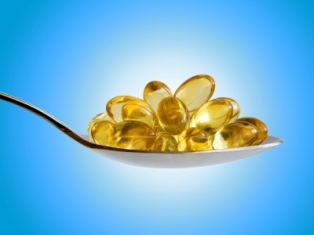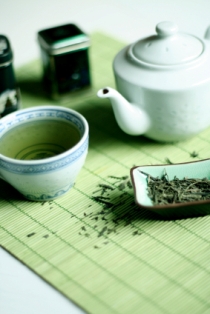10 Fatloss Questions You Should Be Asking (Part 1)
[ Note: This article was written by fitness and nutrition author Jon Benson. Jon is a good friend of mine so I have his permission to share it with you. I have personally reviewed Every Other Day Diet in addition to Jon's other products and I give them my highest recommendation. I'm an affiliate of Jon's and receive a portion of the proceeds made via the links in this article. A portion of the proceeds I receive are used to help expand Natural Health On The Web. This gives me the resources to expand so I can continue to create articles, blogs and offer you a free and reliable resource of natural health information. Enjoy the article.]
Thereâs stuff you know.
Then thereâs stuff you donât know.
But the key to success in anything is the discovery of one other variable:
The things you donât know you donât know.
Think about that.
So many people ask me questions likeâŚ
â How can I get rid of my stubborn bodyfat?
â How fast can I do it?
â Whatâs the best dietplan for me?
These are good questions, donât get me wrong.
But there are at least 10 questions most people never know to ask.
Itâs the stuff they didnât know they didnât know⌠make sense?
Today weâll cover 3 of the 10âŚ
HIDDEN QUESTION 1:
âWhatâs The Best Dietary-Fat To Eat To Get Rid Of Bodyfat?â
Sounds nutty, doesnât it?
The media loves to deceive you when it comes to dietary fats⌠and Iâm here to set the record straight:
You absolutely must consume dietary fat in order to burn-off your bodyfat.
Thereâs an old saying: âFat burnsâŚbut in the presence of dietary-fat.â
Itâs true.
There are actually two âBest Fatsâ you should be eating:
Coconut Oil
CLA
Coconut oil is ideal to cook with. Use that in place of all the starchy foods you may be eating. Youâll get leaner faster⌠and youâll be a ton more healthy too.
Coconut oil keeps you satisfied longer, lubricates your joints, and yes⌠actually helps you get rid of stubborn bodyfat.
Use 1 tablespoon per 50 lbs per day, but be sure to decrease your starchy carbs (breads, rice, potatoes, etc.)
CLA is a form of (gasp!) transfat⌠but itâs a healthy form that helps your body get rid of bodyfat. You can only get it in supplement-form⌠well, thatâs the best way.
I personally take 4 grams per day. Jarrow is my favorite brand. You can get it at most health food stores.
I cover several other fats you need to eat in my video and book, found here:
The Every Other Day Diet <== Click-Here
HIDDEN QUESTION 2:
âWhy Is Cardio Bad For Me?â
Okay⌠thatâs an over-statement. Itâs not âbadâ for you⌠itâs just not nearly as âgoodâ for you as the media and magazines want you to believe.
Especially if you do it the way they suggest: Too long, too frequently.
Do it the way I suggest and watch what happens.
First, spend 80% of your exercise time doing âresistanceâ training, not cardio⌠but rest very brief between sets.
My newest update to â7 Minute Muscleâ is called â7 Minute Bodyâ. It combines both â7 Minute Muscleâ and an additional 100 or so pages of in-home ONLY workouts.
That way you can train in the gym⌠or in your home⌠and get it done in 7 to 14 minutes a day. Done!
You will be shaping your body and burning-off some major calories at the same time⌠all without boring cardio.
Then when you âdoâ cardio, do it the way I detail in â7 Minute Bodyâ⌠use the 9-minute GXP Cardio Workout.
Add simple walking to this several days a week and your cardio is set.
GXP works because it is progressive and does not over-tax the recovery system. You warm up, then hit about 85% of your max effort, then cool down.
But the key is âwhenâ to do it⌠and thatâs covered in my book.
I still enjoy sitting on my bike and watching TV, but I do that just to burn-off those last bits of bodyfat. Most of you do not need to do this.
Itâs a waste of time for the masses⌠but resistance training is not.
Oh, one more thing: Runners have a far higher degree of heart attacks than non-runners. So cardio âcanâ be bad for you if you over-do it.
NOTE: You can pick up â7 Minute Bodyâ at 77% offâŚ
but only if you get EODDâŚ
More here:
The Every Other Day Diet <== Click-Here
HIDDEN QUESTION 3:
âHow Does Pizza Help Me Shed Bodyfat?â
Sounds like a dream, doesnât it?
Think again.
My dietary plan not only âletsâ you eat pizza (or whatever your favorite foods might be) every week, several times a week⌠it DEMANDS that you do it.
What theâŚ. ?
Yep. Hereâs why.
First, I have you eat less on certain days and certain times. If done the way I suggest your metabolism (the rate you use fat, energy, etc.) will not slow down that much.
Then⌠at a specific time⌠boom! You eat a lot more food⌠and the best way to do this is eating your favorite foods.
First, they usually have more calories.. duh! Second, youâll ENJOY the freakinâ process! Most âdietsâ fail because people hate them⌠too restrictive.
So I created my System from the ground up to ensure I never got bored with my eating⌠and the extra cals from pizza (or my favorite⌠Mexican⌠or Key Lime Pie⌠yum) actually boosts my metabolism sky-high.
Hereâs an example:
Last week I ate the normal Every Other Day Diet-way⌠for me itâs the âExtreme Planâ (there are 4 Plans, each for different goals.)
So, after several days of lower-cal, lower-carb eating, I ate about 5000 calories of Mexican food (so good!) But the TIMING is crucial. You just can wing it. Donât worry⌠I tell you exactly when to do it.
The next morning I saw more of my abs.
I went back to EODD-style eating, which I love btw⌠and then later had some Key Lime Pie⌠and what do you know? Leaner the next day.
Now Iâm doing this as I âpeakâ â I have to be in top shape in December. The only time I stop this is 4 weeks prior to a photoshoot⌠but unless you want to be 5% bodyfat (and you probably do not) you never have to stop it.
Works like a charm.
Watch this and find out why:
The Every Other Day Diet <== Click-Here
Yours In Fitness,
J O N B E N S O N
P.S. Special freebie to those who watch my entire presentation on the page above⌠very nice⌠: )
Posted: October 21st, 2009 under Fitness.
Comments: none
















